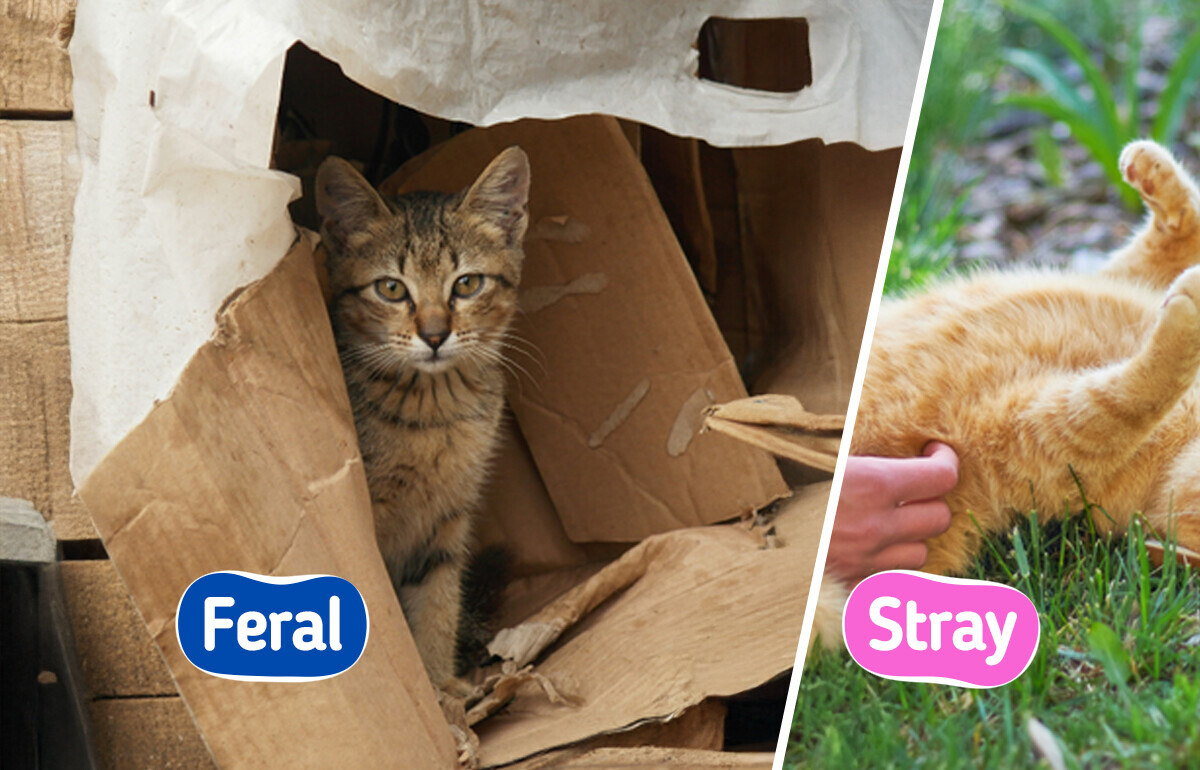How Swimwear Runways Evolved from Stereotypes to Celebrating Beauty Through Diversity


When it comes to cats, many people might imagine a fluffy feline snuggling up with its owner or a lone cat that walks up and down the street minding its own business. No matter how you picture them, they all fall into the same category known as the domestic cat.
However, it does not mean that all cats are the same. Some are strays while some others are feral, and so they require different treatments. Keep reading to learn the differences to make sure you can interact with them just right!
The way a cat, be that stray or feral, grows up and interacts with people makes a huge difference in its behavior, personality, and even how it should be treated.
Let’s start with the first one. In general, a stray cat used to have a home or owner of its own, but it sadly got lost or even abandoned altogether. However, thanks to their previous human interactions, stray cats still could trust people, which could lead to a possible adoption. As for feral cats, things might be tougher for them due to their wild nature.
Feral cats have either been born outside and never had human contact, or they have been on their own for so long that they see people as a threat. Unlike strays, feral cats usually don’t want to be petted or taken in—they’re the happiest living freely outdoors.
You can start socializing a cat by making it familiar with human touch, homes, and all the sights, sounds, and smells that come with living around people. Do not expect it to be quick and easy because it takes patience, time, and plenty of love from caring humans.
Cats become socialized when they’re handled, talked to, and played with regularly from a young age. If they did not have this opportunity when they were still kittens, they would likely grow up wary of people, making it hard for them to feel at ease in a home environment.
That’s why it is never too early to introduce kittens to human interaction—getting them used to being held and petted, meeting different people, and even being around other animals. If they have many positive experiences early in life, they will likely grow into friendly, well-adjusted cats that thrive in a home setting.
Indoor or pet cats are fully socialized to people—they’re used to human interaction and enjoy being around their owners. Stray cats have also been socialized at some point in their lives, but since they’ve been on their own, they might be cautious around people, especially if they’ve been without a home for a long time.
As for feral cats, things are very much different. They aren’t socialized to humans at all. They may have strong connections with other cats in their group and even have their own social structure, but such connections are nonexistent with humans. Feral cats see humans as a threat, thus they tend to keep their distance.
A stray cat was once a pet but lost its home due to abandonment or getting lost. Without human contact, it may become wary and, over time, act more like a feral cat. Some stray cats are still okay with being petted, but prolonged isolation can make them more distant.
However, there is still a good chance to turn things around. With patience, a stray can often readjust to indoor life. Keep in mind that a stray cat may need some time to regain its trust in people.
As mentioned above, a feral cat is totally unsocialized. It has never had any interactions with people. Even if it has, the cat has lost that connection over time. Feral cats are so afraid of humans that they unlikely to make good pets. They like to be outdoors, too.
You can try to socialize kittens born to feral cats. Make sure to do it very soon though, because, after four months, the socialization process gets difficult and often fails.
Since trapping can be stressful and make it hard to judge a cat’s socialization, it’s best to observe them in their natural outdoor environment first. Use the guidelines below to get a clearer idea of their behavior.
Movement:
Vocalization:
Schedule:
Physical Appearance:
Touch Barrier:
Level of Relaxation:
Responsiveness:
Fear and Anxiety:
Before you go, don’t forget to check out these gentle cat breeds that make perfect pets for kids or families.











